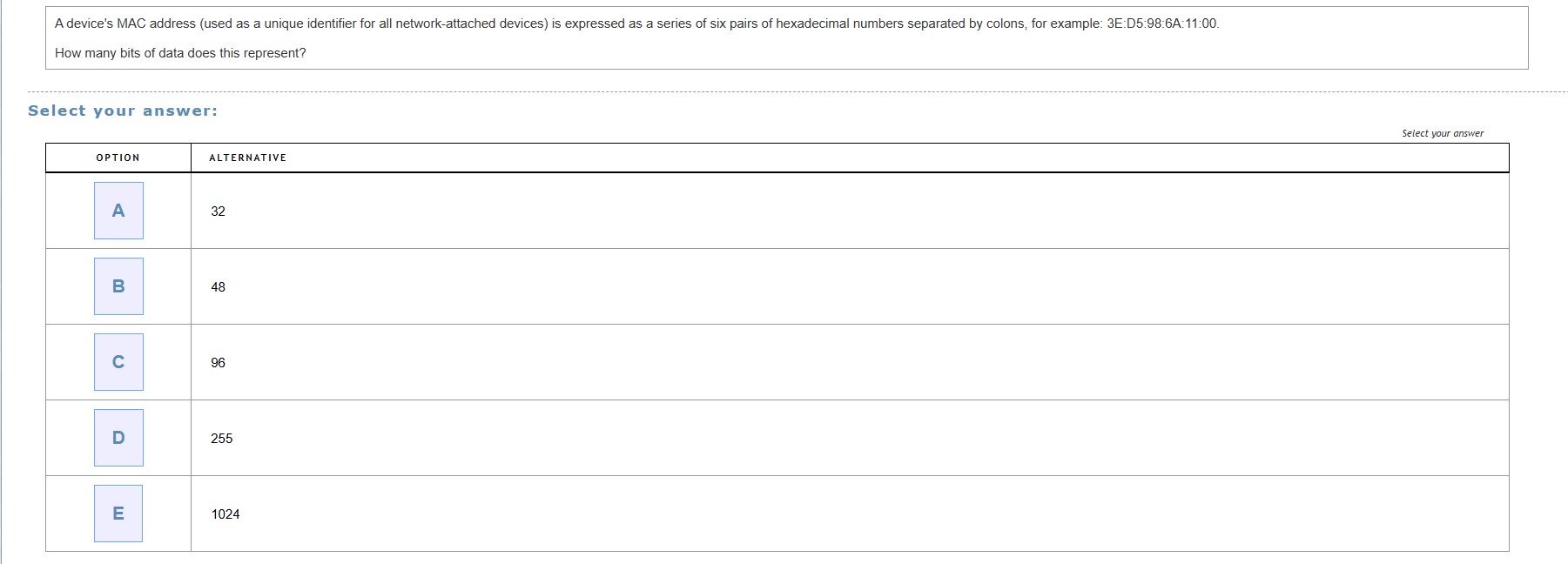How many bits of data does a MAC address represent?

Understand the Problem
The question is asking how many bits of data are represented by a MAC address, which is typically expressed in hexadecimal format. Each hexadecimal digit represents 4 bits, and a MAC address consists of 6 pairs of hexadecimal numbers, leading to a calculation to determine the total number of bits.
Answer
The number of bits a MAC address represents is $48$.
Answer for screen readers
The total number of bits represented by a MAC address is ( 48 ) bits.
Steps to Solve
- Identify the structure of a MAC address
A MAC address consists of 6 pairs of hexadecimal numbers separated by colons. Each pair represents one byte.
- Calculate the total number of hexadecimal digits
Since there are 6 pairs and each pair contains 2 hexadecimal digits, the total number of hexadecimal digits is:
$$ 6 \text{ pairs} \times 2 \text{ digits/pair} = 12 \text{ digits} $$
- Determine the number of bits per hexadecimal digit
Each hexadecimal digit represents 4 bits. Therefore, to find the total number of bits, calculate:
$$ 12 \text{ digits} \times 4 \text{ bits/digit} = 48 \text{ bits} $$
The total number of bits represented by a MAC address is ( 48 ) bits.
More Information
A MAC address serves as a unique identifier for network devices, allowing them to communicate within a local network. The hexadecimal representation makes it compact yet efficient for segmentation into bytes.
Tips
- Confusing the number of pairs with the number of bits directly without considering the bits per hexadecimal digit.
- Miscounting the pairs of hexadecimal numbers in the MAC address.
AI-generated content may contain errors. Please verify critical information